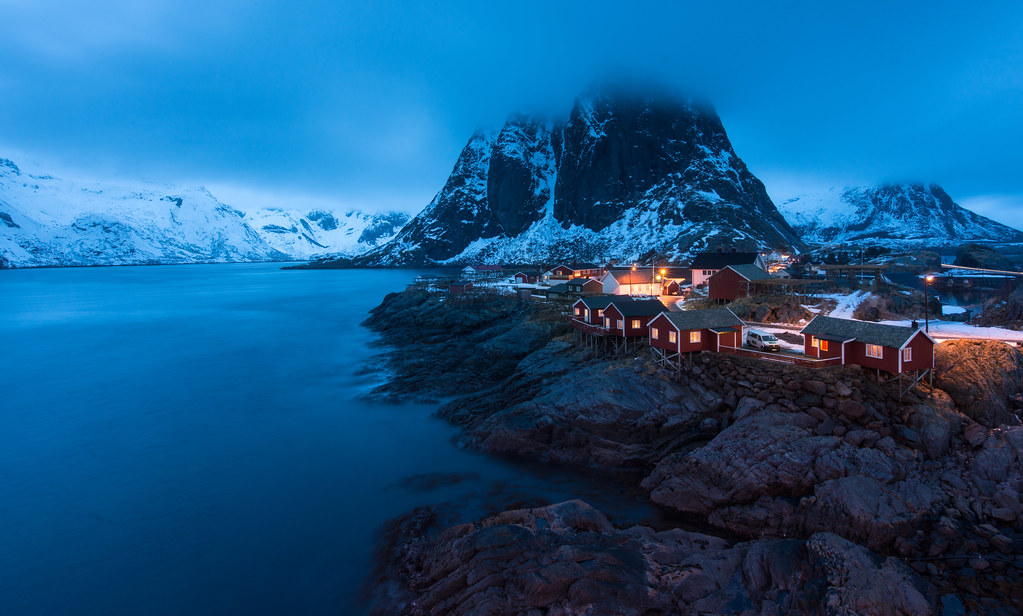A friend of mine messaged me yesterday after I recommended he buy the
Samyang 12mm f/2 lens for aurora and night photography. His question was simple: is there another use for this lens outside of these fairly specialized applications? Specifically, could this be used for typical landscapes?
So I tried to answer him, but then the answer got too long, needed examples, and just wouldn't work on Whatsapp. So I typed this up, and then figured I may as well share it here as it's something others may find useful too.
Let's get the easy part out of the way: by being f/2, this lens is extremely fast - i.e., it lets in a ton of light. Your Sony kit lens' largest aperture is f/3.5, so this Samyang lens lets in approximately 3x as much light. For astro and aurora photography, it's immediately obvious why this would be a great lens.
Now for the more complicated part: itís extremely wide. Thatís really the defining feature, and that is both its boon and its bane.
What that means is that it distorts relative space and perspective. Close objects appear closer (and consequently larger), while distant objects appear more distant.
The big fallacy with how people use this lens Ė and the reason why itís not simply "the best landscape lens" Ė is that they think wider = stuffing everything into the frame. They forget about the perspective distortion. They see a big, beautiful scene in front of them, think ďhey, Iíve got a wide lens so I can capture it allĒ, and end up with an image thatís half taken up by the patch of grass they were standing on and with some tiny mountains in the background.
Why is that? Perspective distortion. The grass they were on is close, and so became the dominant feature in the image. The mountains are far, and so they receded even more into the distance and now look minuscule. This is why pictures of incredible views often look so underwhelming: the vast majority of those are taken with wide lenses trying to capture the immensity of the view. But in doing so, everything just ends up tiny and barely visible.
Here are two of my first attempts at using an ultra-wide lens (don't judge!). Both pictures are pretty pathetic, with most of the picture taken up by deathly-boring foreground and the rest by what may have been a pretty or dramatic scene, had everything not been so tiny:


The trick to using this lens successfully is understanding this distortion and using it to your advantage - for example, use it to highlight an interesting foreground object. The lens will make it appear way bigger and more dramatic, and is especially useful for water and rocks.
There was this 2Ē river running over the beach here, and barely visible. But by getting close to the water and tilting the camera a bit downwards, I was able to exaggerate the water and make the picture infinitely more interesting:

Same goes for this rock. The picture was relatively blah, with no color or a good anchoring subject. So I got into the water, put the camera within 3 inches of this little rock, and got a nice picture. The rock adds balance, a splash of color, and most of all, a feeling of standing right in the water with me:

And itís that last point that is my favorite use of this lens: placing the viewer smack dab in the scene. Neither of the following pictures would have been possible with a regular lens. The distortion you get with the wide one, however, allows you to feel like youíre standing IN the scene, rather than just being an observer on the outside. You are essentially stretching the scene around the viewer:




And of course, sometimes you just need a wide lens because otherwise you simply cannot fit your scene into your frame. In the following shots, this works because the important elements of the shot were all relatively close and so did not shrink into the background, as would happen in "deeper" scenes.
In this shot, all of the important parts if the image were within a few feet from the camera. Even better, there was an
unimportant element a slight distance away, so the distortion worked even more to my advantage. See that parking lot off to the left? It's barely visible. In reality, this lot was far closer than it appears and was quite a distracting part of the scene. But using such a wide lens allowed me to shrink it down to a barely-noticeable issue:

In order to get both the ground and the best part of the aurora, I needed a lens wide enough:

And the same here: the rocks were too close to be included had I not had an ultra-wide lens. Note that the mountains here were incredibly close, which is why they maintained their impressive size. Had they been further away, this image would not really have worked:

Another thing to watch out with ultra-wide lenses is that anything in the very corners will be very distorted. This is not a huge issue with landscapes, but try putting a face in the corner and watch the camera add
50 pounds.
So in short, this type of lens is absolutely invaluable to a landscape (or interior) photographer. But you can't use it willy-nilly on every pretty scene you come across.
With a bit of discipline and some practice you can become the master of the ultra-wides.